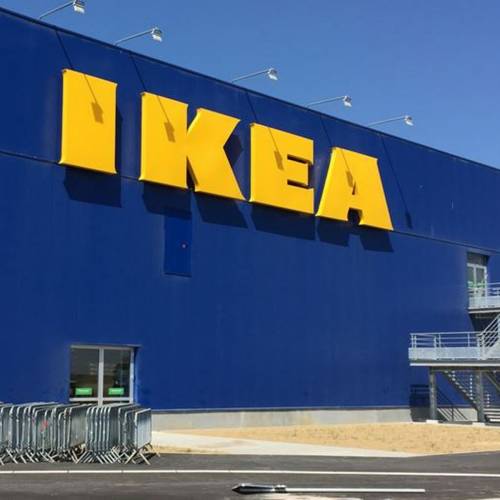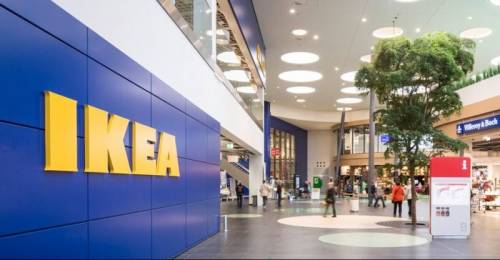The big marketing challenge for Ikea in India
"One of the biggest challenges was how to generate buzz and excitement for a new store, manage crowd control, and make sure they have a safe shopping experience
- by B2B Desk 2021-01-06 07:30:20
Ikea india recently opened its second Indian store in Navi Mumbai on December 18 to create a better everyday life for those with big dreams and slim wallets. Unlike the mega-launch that caused a sensation in Hyderabad in 2018, as people flocked to the store, Ikea had to maintain an in-store border this time according to Covid2019 protocols. Despite the restrictions, the opening of a store of more than 5.3 lakh square ft is still a great success, with the visiting boxes in the store reserved well in advance. Although that was challenging, the brand handled all of the warehouse preparations at the height of the pandemic.
"One of the biggest challenges was how to generate buzz and excitement for a new store, manage crowd control, and make sure they have a safe shopping experience." Amitabh Pandey, Marketing Director of IKEA India, said: "We are very happy to say that we did so well and that our store got off to a good start.

Despite being a global brand, India has not been an easy road for Ikea. It reported a net loss of Rs 720 crore in the fiscal year ending March 2020. On the positive side, its net sales grew 64.68% to Rs 566 crore in the 2019-2020 fiscal year, down from 343.7 million rupees in the previous fiscal year. The furniture retailer needs to build trust and accessibility for the brand in the Indian market. Unless people are convinced that they are buying a premium product from Ikea at an affordable price compared to the traditional store where they used to buy furniture, they will never adopt the brand. One of the main tasks of the brand is to get consumers to take samples of its store and its catalogs. So the big challenge of marketing in India is "How do you build a premium brand in a new market?"
Pandey said: "IKEA is a very popular and innovative brand in the rest of the world, while in India it started from scratch. India is a new market, where we can explore the understanding of people's lives at home and then trust this to connect us deeply and meaningfully with our clients.
It's called Swedish stoicism, but Ikea's plans for the Indian market remain unchecked even after the pandemic. Management continues to believe in its long-term vision. "We still believe in brand building in India and marketing spending is a big part of that. We have no plans to change the current marketing budget for 2021," Pandey emphasized.
Ikea has a long-term vision for the Indian market. It has already invested Rs 7 billion in India, through its two stores and various execution venues. It is now operating outlets in cities like Bengaluru and New Delhi, along with smaller stores in other cities. IKEA india continues to focus on business growth opportunities in existing channels and opening new channels and units.

The brand has also stepped up its marketing activities in the last two years, launching several multimedia campaigns to focus on the role that Ikea plays in the consumer's home. These designs mainly speak of how consumers can buy various IKEA products at a very nominal price.
Pandey shared that the main focus of Ikea's marketing strategy has always been to create a better everyday life for the "many," not just a few. The products indicate that there is something for everyone, regardless of age, lifestyle, or wallet size. "In India, we have translated Ikea's global vision into a local environment that we refer to as 'Making Every Day Brighter.' At its core, it is about offering well-designed, functional, and affordable products that respond to current and changing needs. life at home for many in India Includes providing a satisfying customer experience in our store and online Includes our sustainability agenda for "positive people and planet" and what we do for our communities.
Ikea constantly optimizes its media mix based on campaign needs and works closely with its partners to get the best return on investment for each media.
“Our ATL strategies are based on two main aspects. The first is based on building our long-term brand position as a unique, trustworthy and meaningful brand. Second, it's about stimulating our existing customers with new reasons to come to meeting points frequently throughout the year, whether online or offline. "We have a yearly calendar that we follow based on the overall marketing plan for the year," explained Pandey.
Social media is an important part of a brand's overall communication and media strategy. It is present on all platforms: Facebook, Instagram, YouTube, Twitter, and LinkedIn, and it also works with social influencers.Our approach is to share unique IKEA communications and content, specially designed for social media, with a high-frequency engagement with our customers. Our content leads to inspiration around home life ideas and solutions to improve everyday life. In addition to showcasing our full range of furnishing solutions, The House is affordable for people to choose from to meet their needs at home. "
Ikea india will continue to evaluate each medium before betting on it. The brand claims to have built a strong and loyal foundation in no time to come back to it again and again throughout the year, both in stores and on its e-commerce site ikea.in. The company has also started e-commerce operations ikea india online in Hyderabad, Mumbai and Pune.
Pandey concluded his speech by sharing what he has learned from 2020, noting that humans are finally realizing that they can't get away with everything. “We are forced to reevaluate our ways of life on this planet, expand our existence at the expense of nature, consume limited resources, and create an unequal and even irresponsible society. I would like to believe that we are on a more humble, contemplative, and conscientious path regarding our way of life.
One of the lessons industries have learned is to move from "consumption-based growth" to "purpose-based growth." I added that this means clarifying the purpose of our brands.
In my opinion, consumption has been the building block of all modern economies. So much so that many of us believe that consumption = happiness. Brands and companies rely on increasing consumption year after year. But once we start to question this primary growth engine, how do we move forward? This is a fundamental question that we must all answer. ".
Also Read: 10 Trends That Will Shape the Hospitality Industry in 2021

POPULAR POSTS
Loan EMIs to Drop as RBI Slashes Repo Rate - Full MPC December 2025 Highlights
by Shan, 2025-12-05 11:49:44
Zoho Mail vs Gmail (2025): Which Email Platform Is Best for Businesses, Startups, and Students?
by Shan, 2025-10-09 12:17:26
PM Modi Launches GST Bachat Utsav: Lower Taxes, More Savings for Every Indian Household
by Shan, 2025-09-24 12:20:59
$100K H-1B Visa Fee Explained: Trump’s New Rule, Clarifications & Impact on Indian Tech Workers
by Shan, 2025-09-22 10:11:03
India-US Trade Deal Soon? Chief US Negotiator Arrives in Delhi as Talks Set to Begin Tomorrow
by Shan, 2025-09-15 11:54:28
Modi Meets Xi: Trump’s Tariffs, Strategic Autonomy, and the Future of Asia’s Power Balance
by Shan, 2025-09-03 06:40:06
Google Claims Gemini AI Uses Just ‘Five Drops of Water’ Per Prompt, Sparks Debate
by Shan, 2025-08-22 12:34:27
RECENTLY PUBLISHED

Pine Labs IPO 2025: Listing Date, Grey Market Premium, and Expert Outlook
- by Shan, 2025-11-05 09:57:07

The Agentic Revolution: Why Salesforce Is Betting Its Future on AI Agents
- by Shan, 2025-11-05 10:29:23

Top 10 Insurance Companies in India 2026: Life, Health, and General Insurance Leaders Explained
- by Shan, 2025-10-30 10:06:42

OpenAI Offers ChatGPT Go Free in India: What’s Behind This Big AI Giveaway?
- by Shan, 2025-10-28 12:19:11

Best Silver Investment Platforms for 2025: From CFDs to Digital Vaults Explained
- by Shan, 2025-10-23 12:22:46





 Subscribe now
Subscribe now 